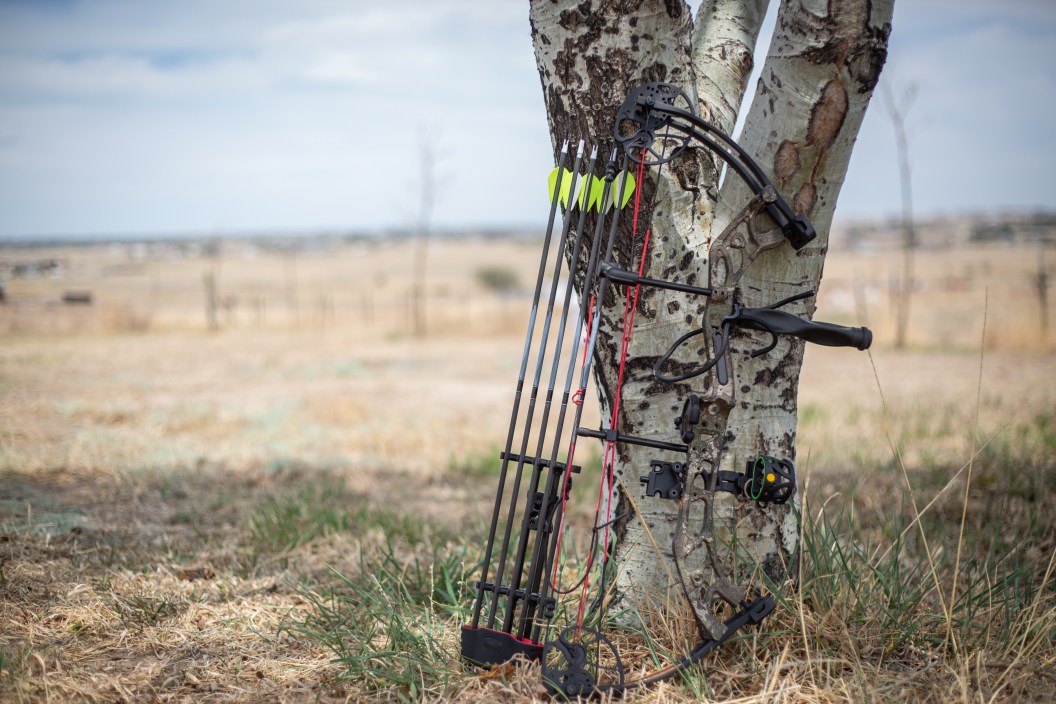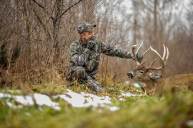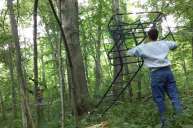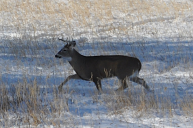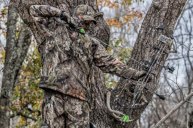Treestand placement is vastly different for hunters who choose to take their game with a bow instead of a rifle. Instead of merely placing your stand in a position where you'll see deer, bowhunters must find a location giving them the greatest chance of sticking an arrow into a buck—ideally, within 20 yards. That definitely takes a strategy different from placing the treestand where you shot a buck 150 yards away last season.
Fortunately, as veteran bowhunters know, it's not all that hard to place your treestand in the right position. You just have to get a little more personal with your game and have a good idea of how and when deer move. Instead of setting up farther away and watching a popular trail or food source for the deer, you have to be in it. Importantly, you still have to be sly enough not to spook deer.
If you're new to bowhunting, or are just looking to improve your early-season hunting strategy, this article has everything you need to know about placing your treestand in the perfect position for bowhunting this year.
1. Everything Relies on Wind Direction
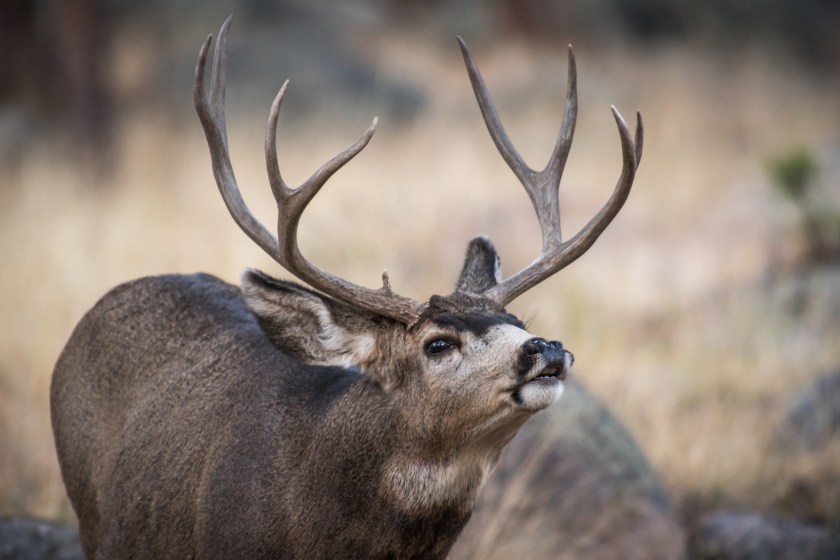
Getty Images, Matt Dirksen
A bowhunter's success relies heavily on being able to use the direction of the wind. As a hunter of any skill level knows, a deer's nose can detect human scent very easily. That's especially important since you'll need to be within 30 yards or so to get a good shot with a bow, so it's crucial that you consider the direction of the wind when placing or hanging a treestand. (And when considering how wind will affect your shot.)
When you find a bowhunting stand location using the other tips on this list, ask yourself: Which wind direction would be optimal for hunting this location? The objective is to always stay downwind of your target to prevent them from detecting your scent. If you've noted this directional info about your stand, you can match where you hunt with the way the wind is blowing on a hunt day.
You can't control the wind, which is why I sometimes like to place multiple stands within the same general area. This way, I can hunt a high-traffic area no matter the wind direction.
2. Consider Access Points
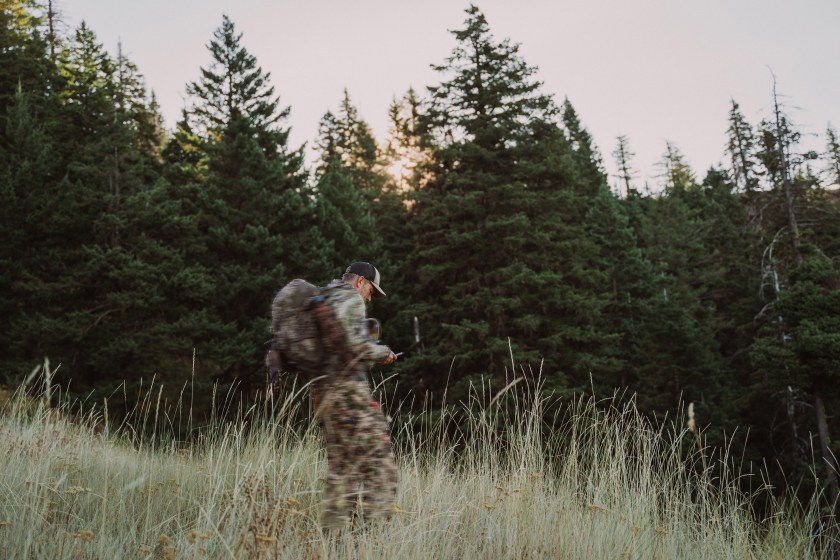
Getty Images, Fly View Productions
Another thing to consider before you actually hang your stand: How will you get to it?
One common mistake for new bowhunters is placing a treestand in a location that ruins their chances before the hunt even begins. Nothing will ruin a hunt quite like rambling straight through a deer's bedding area and spooking multiple bucks and does on your way in. It is true that young bucks and does might stick around after being spooked in the darkness, but a mature buck usually won't. You'll want to plan ahead while scouting to create or find the quietest possible entrance for your treestand location.
You never want to use the deer trail you are hunting as an entrance path. If you have to make your own path, do so, but do not walk anywhere where you expect to see deer.
If you're hunting in and around dense forests, avoid walking into your hunting area on dry leaves and sticks that are going to crunch and crack with each step you take. I often like to use creeks to walk to my stand, as long as they aren't very deep and the rocks aren't too slippery. If you stick to a creek on the way in, you will also leave less scent behind.
3. Get Some Elevation
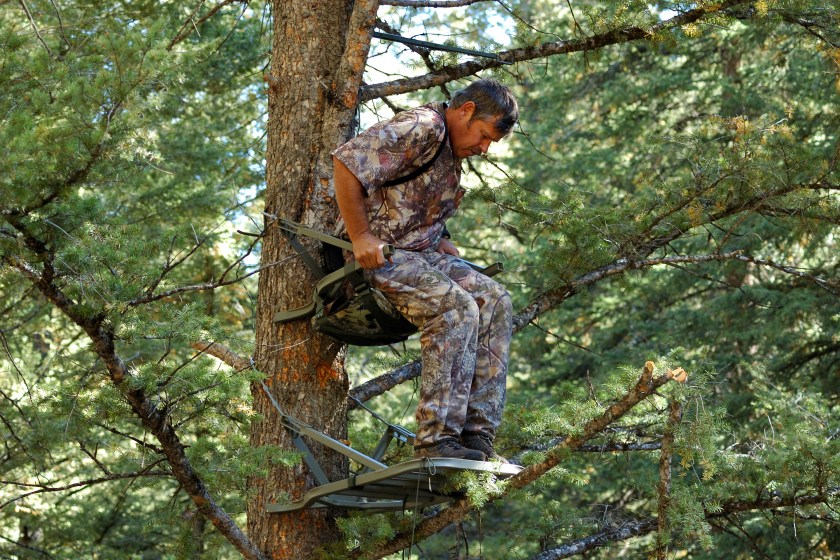
Getty Images, Life Journeys
When hunting with a rifle, it's best for a stand to be roughly 15 to 20 feet off the ground in order to provide a good field of view through the forest just under the tree canopy. If you're bowhunting, however, you'll want to place your treestand a few feet higher if you're able to do so.
Having a treestand at higher elevation gives you a few advantages. For one, you can see farther, giving you a glimpse of a deer earlier and providing extra time you need to prepare for the shot. The other advantage of a higher treestand is keeping your scent off the ground as it drifts downwind.
In most cases, being higher up will also help keep deer from seeing you as you move your body for a shot. I've been busted a few times by good bucks because I tried to make too many movements in a short amount of time. A high stand means you can stand up, ready your bow, draw back, and get on target—all while remaining unseen.
4. Use the Sun
Avid deer hunters know that you need to use every possible advantage to get a shot on a trophy buck. One of the more overlooked items to consider is the position of the sun in the morning and evening. Just like us, deer can't see all that well with the sun shining in their face.
If you're hunting over a specific food source or trail, try to place the stand so that the sun is at your back. This will hopefully conceal you as you ready your shot.
As you might have already guessed, if the sun is at your back in the morning, it will be in your eyes in the evening. Ideally, you could use a climbing stand and reposition yourself on the tree to keep the sun out of your eyes—or know which stands face into the evening or morning sun, so you can choose your placement appropriately.
5. Create Shooting Lanes
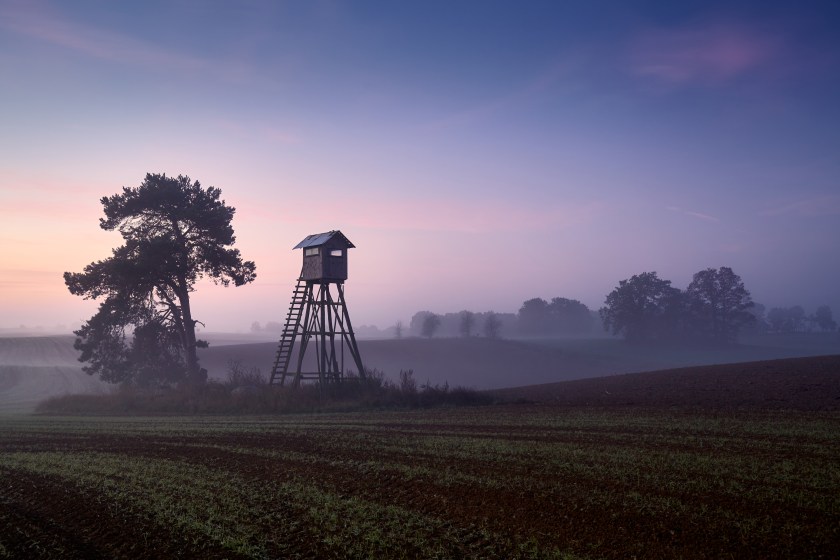
Getty Images, MBPROJEKT_Maciej_Bladowski
When setting up your stand along a trail or in an area where deer will travel from one point to another, be sure to identify some potential shooting lanes. If your stand position doesn't offer many shooting lanes, you can always make a few before the hunt.
Instead of using a chainsaw to cut trees down, try to keep all the trees and foliage around your stand as intact as you can. I prefer to use a pole-saw to cut limbs off in the summer and create shooting lanes that will allow me to have a section that's at least 3 to 5 yards wide and roughly 30 yards long.
If I'm hunting a spot where multiple trails converge, I'll cut a few shooting lanes in areas where I expect deer to travel. Be careful not to overdo things when cutting or trimming trees around your stand. Sometimes having just a small limb covering your position will be enough to allow you to draw your bow.
If you are setting up a stand quickly—maybe even the morning of your hunt—I suggest that you keep a foldable saw in your backpack. You can use this to cut limbs on your own tree, or lower limbs on trees around you that are blocking your view of where you expect deer to be.
6. Use Cover
It's incredibly frustrating to get your coat, bow, or other gear caught on a limb as you're setting up to shoot a deer. It can be tempting to completely clear the tree you're using of all limbs in an effort to avoid this. But you might be doing more harm than good. Providing cover is vital for any treestand, and especially one for bowhunting.
Notably, this may not necessarily be cover formed by the foliage on the tree you're sitting in. In many cases, I'll seek out a tree that has decent cover from an adjacent tree. This keeps you hidden but gives a little room for maneuvering around and seeing deer below.
In an ideal setting, you should be able to move around in the treestand, reposition your feet, and draw your bow without being impeded by a nearby limb. Don't be too hasty in cutting away limbs from your tree when you're hanging your stand. I look at cutting limbs off a tree in the same way a sculptor might view a rock they're carving: You can always take some off, but you can't put it back on once it's gone.
